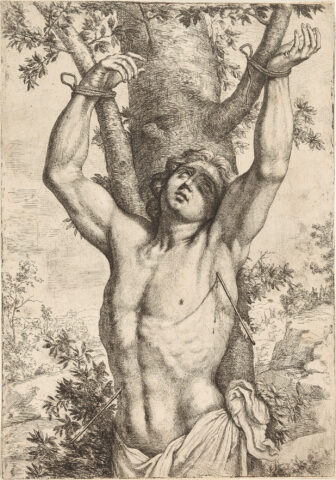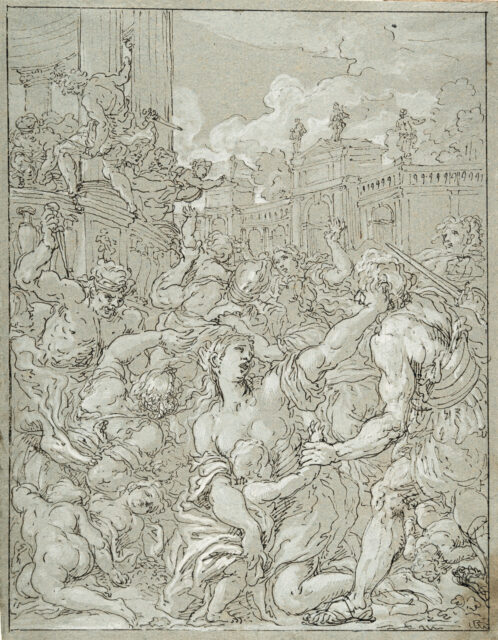
The massacre of the innocents
Details
Literatur:
Nicholas Turner, European master drawings from Portuguese collections II: Italy and Portugal, Porto 2021, S. 144, Kat.-Nr. 59, mit farb. Abb.
Ausstellung:
Desenhos de mestres italianos em colecções portuguesas (II), Museu Nacional Soares Dos Reis, Porto (Oktober–Dezember 2001), Kat.-Nr. 59
Provenienz:
Wohl Jean-François Gigoux (1806-1894), Paris, (vgl. Lugt 1164);
Ingeborg Tremmel (1925-2002), Fürstenfeldbruck;
Ketterer, München, Auktion (Sammlung Tremmel), 5.5.2003, Los 387 (als “Florentinisch”);
Privatsammlung, Belgien;
Artcurial, Paris, Auktion, 27.3.2015, Los 82 (als “Johann Carl Loth”);
Europäische Privatsammlung.
Description
The effective lighting, created by means of numerous white highlights applied to the grey-blue paper with the tip of the brush, and the movements of the bodies, set close to the front plane of the picture and entwined in tumult, captured with powerful strokes, may lead one to think that this pen and ink drawing is a Venetian work of the late 16th century (cf. for example “The Martyrdom of St. Justina”, J. P. Getty Museum, Los Angeles, inv.-no. 87.GA.92, no. 87.GA.92). This highly dramatic depiction of the Bethlehemite infanticide was in fact painted in Venice, but a century later. It is not the work of a native Italian, but an example of the draughtsmanship of the German-born painter Carl Loth, who had made Venice his adopted home. Loth experimented again and again with placing as many naked bodies as possible in a limited pictorial field by means of skilful arrangement, and this is also the case here. Loth was trained by his father, the court painter Johann Ulrich Loth (c. 1590-1662), who in turn was strongly influenced by 16th century Roman painting. He is known to have lived in Italy since about 1655, first in Rome, then in 1656/57 he moved to Venice, which he never left until his death. There he worked under Giovanni Battista Larghetti (1625-1676), a successor of Luca Giordano (1634-1705), whose dramatic tenebrism he incorporated into his own work. He achieved some renown in Venice. Among his collectors was Leopold I, Holy Roman Emperor, who appointed him court painter in 1692. – With a brown stain in the lower right corner. The paper of the left edge slightly cockled. Minor creases. In good condition.
* All results incl. buyer’s premium (27%) without VAT. No guarantee, subject to error.
** All post-auction prices excl. buyer's premium and VAT. No guarantee, subject to error.
*** Conditional Sale: The bid was accepted below the limit. Acquisition of the work may still be possible in our post-auction sale.
R = regular taxation
N = differential taxation on works of art which originate from a country outside of the EU
The private or commercial use of images shown on this Website, in particular through duplication or dissemination, is not permitted. All rights reserved.
Recently viewed



